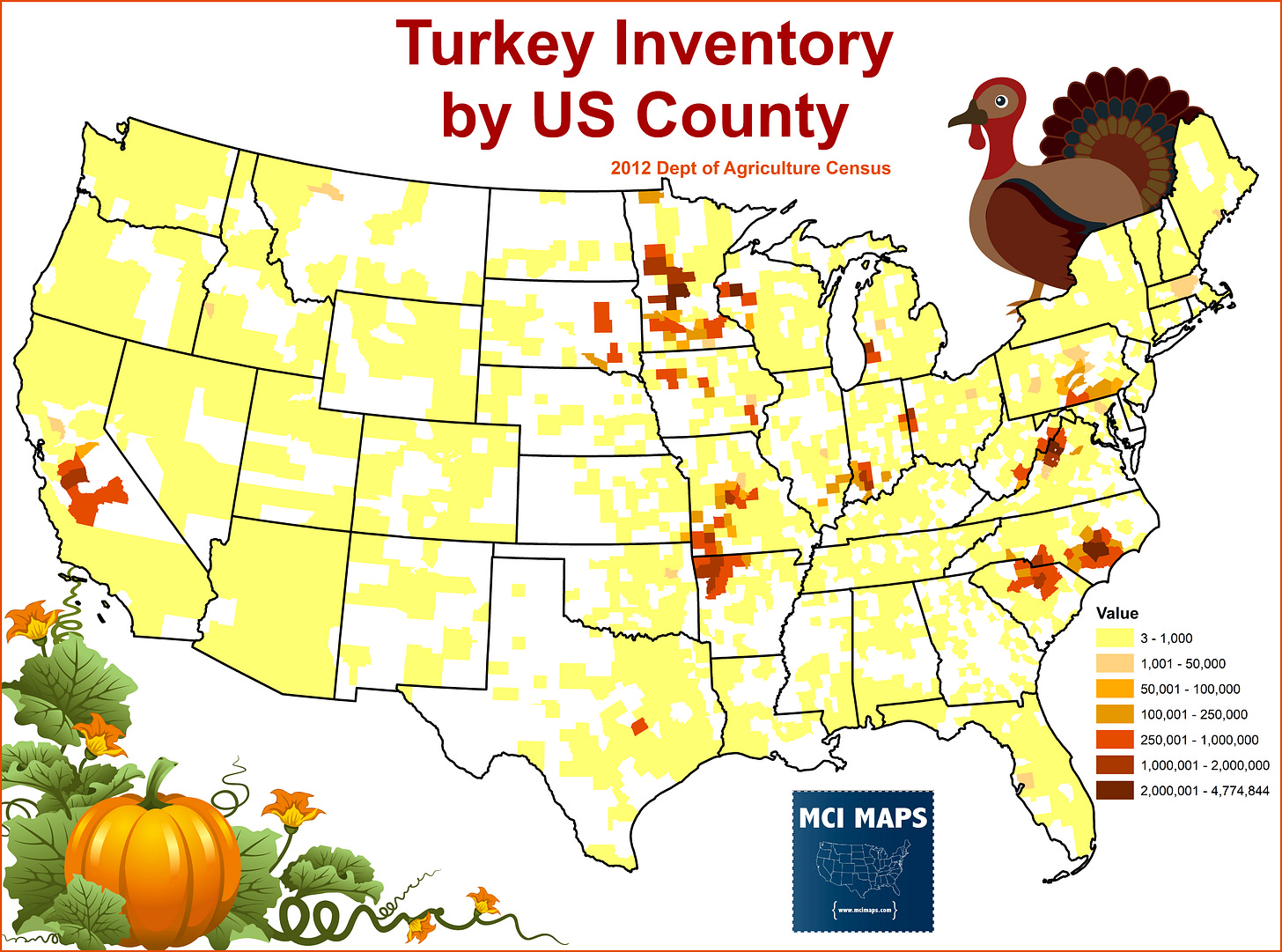MCIMAPS Thanksgiving Issue: The Story of "Franksgiving"
Why we celebrate this week
Note: This is a repost/edit of a 2021 article
This Thursday is Thanksgiving in America. With that, millions of Americans are traveling to see family for the annual feast and/or reason to drink and watch football; and likely argue about politics.
But wait? Is this Thursday? Or is it supposed to be next week, the last Thursday of the Month? Believe it or not, this was a real issue in the late 1930s and early 1940s. Depending on where you where - Thanksgiving could be on a different week.
Why was this? Why else…. politics.
The Story of “Franksgiving”
I wrote about the saga of “Franksgiving” in my 2017 article, which I recommend for a more in-depth look. The short story is pretty straight forward. Thanksgiving had, up until the 1930s, been the last Thursday of November. Often, this was the fourth Thursday. However, every few years November has five Thursdays, which would be the official holiday date. At times, this would put Thanksgiving closer to Christmas than normal, but for a long time, this was considered no big deal.
However, in 1939, as the country continued to wade its way through the Great Depression, the date fell on November 30th. Business owners worried that the short time between Thanksgiving and Christmas would lead to fewer present purchases; and hence fewer for companies that were relying on a holiday rush.
Taking this issue to heart, President Franklin Delano Roosevelt decided to declare November 23rd Thanksgiving. This would give an extra week before Christmas, and hopefully yield more purchases.
Well, all hell broke lose. Multiple states declared they would not move the date. Some reasons were partisan, others were more local. Namely, many states had their big college football rivalry games scheduled for what they presumed would be the traditional Thanksgiving date. This included southern Democratic states.
Opponents of the earlier date derided the the November 23rd as “Franksgiving.” While three states opted to celebrate both dates, the remaining 45 divided over the changed dates. In the end, the nation became a patchwork of different dates for the holiday.
How these date decisions match with partisan control of the Governors (who were the ones to ultimately decide what might be a paid state holiday), show that many states did follow or not follow FDR, regardless of partisan affiliation.
Some GOP governors opted to go with FDR on the new date, while others rejected the push as federal overreach. Many Southern Democrats, who never had the easiest relationship with FDR, also had no issue bucking him - especially if the football matches were already set. In deep-blue Arkansas, a football coach went on record saying
We'll vote the Republican ticket if he (FDR) interferes with our football
Just a year later, the same issue arose again. If Thanksgiving was to be the last Thursday of the month, it would fall on the 28th - leading to another short shopping season. The late holiday led to another FDR declaration for the week earlier, and another batch of states either deciding to go along with it or not.
By this point, Roosevelt was coming off his 1940 Electoral College landslide for a third term. Whether that factored into decisions or not - there were notably fewer states rejecting the FDR proposal. Partisanship was never a perfect driver of the issue. See below how these states decided to celebrate Thanksgiving compared with their vote for President in 1940. The Willkie states split on the date, but FDR states were much more in favor.
The story repeated itself again in 1941, with FDR aiming for a November 20th date instead of November 27th. Many states balking at an earlier Thanksgiving, while others going along with the President.
Here is where we can see how Governor control could sometimes change the Thanksgiving dates. Five states saw partisan control change their Thanksgiving dates. Other states saw changes in dates but no changes in partisanship. Others changed partisanship but not in dates.
By this point the situation was untenable. Congressmen from the midwestern Turkey-producing states said that a uniform date was needed. Fun fact, here is where current Turkey inventory are in more modern times.
With FDR’s blessing, Congressed passed a resolution that said the 4th Thursday of every November would be Thanksgiving. Most years this was the last Thursday; per tradition. But in cases of a 5th Thursday, Thanksgiving would remain on the 4th week. This offered a balance that easily passed. THAT is why this year we celebrate Thanksgiving this week, and not next, even though we have one more Thursday to go.
By this point the data also showed that moving the dates earlier did not increase money spent on holiday shopping. FDR likely could have simply stopped offering earlier dates, but the resolution compromise seems like a way for both sides to save some face and not “back down.”
The resolution was first tested in 1944, which had a 5th Thursday in November. Most states stuck with the agreed date, aka the 4th Thursday, but a handful of states remained celebrating the end of the month instead. Most of the reasons cited were simple - tradition and/or football.
However, when the same issue came up in 1945, only two states - Tennessee and Arkansas - stuck with the “traditional date.”
There were a handful of conflicting dates in years to come, but by the 1950s everyone was on the same page. The last state to offer a different date from the resolution was none other than Texas. Read my original article for more details.
You can see the full 1939-1941 data set below! This represents the time of greatest controversy.
That’s all for this week.
Happy Thanksgiving!
PS: Pumpkin pie is the best pie.














Fun column!! Thank you! And happy holidays!